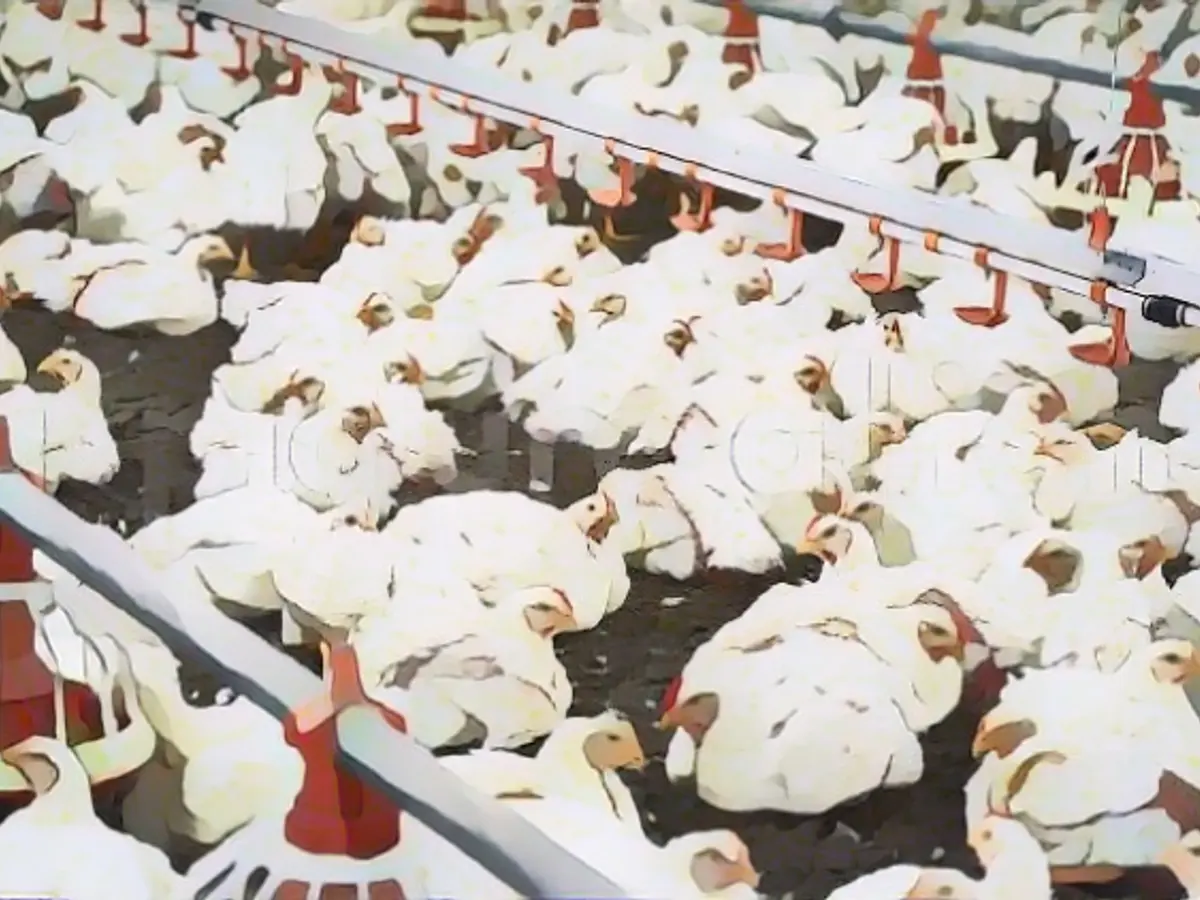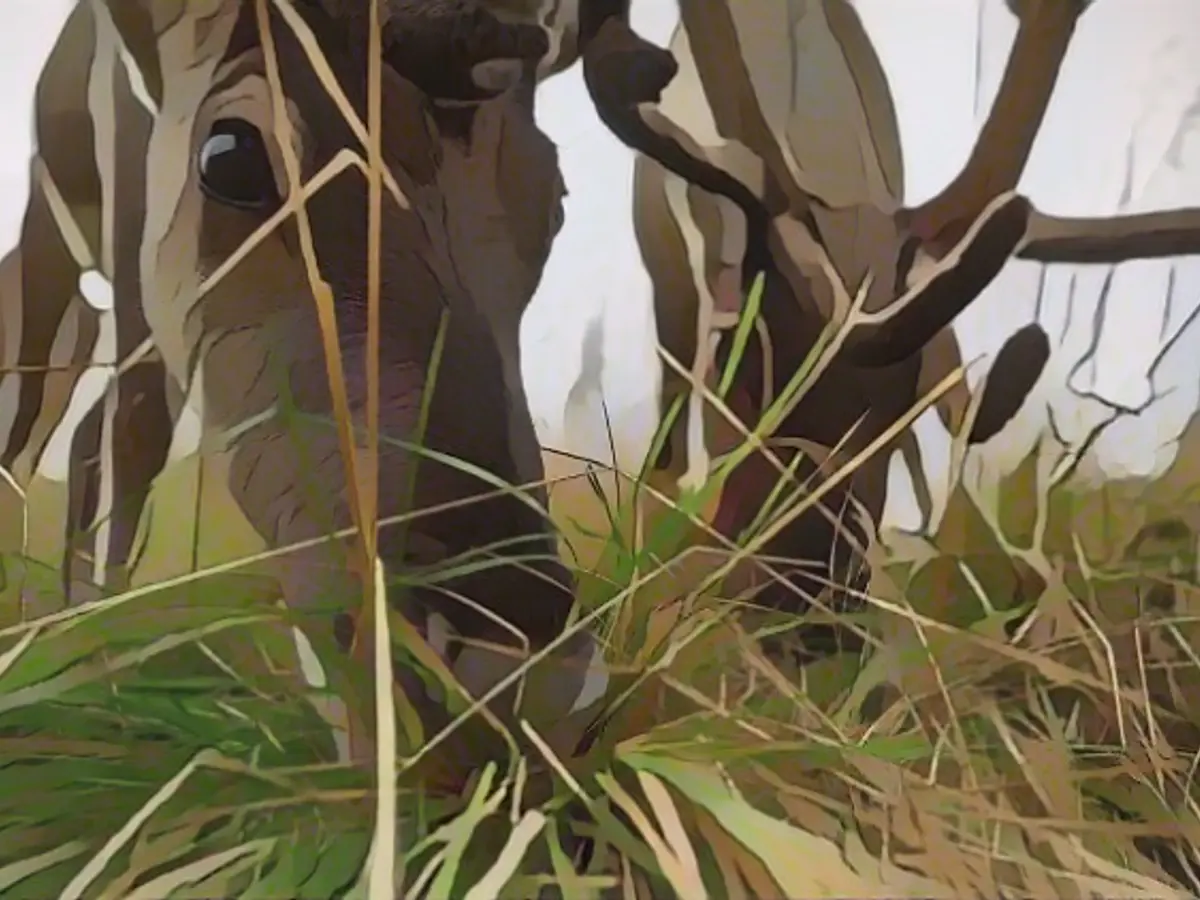Factory Farms and the Marek's Disease Virus Transformation
From a relatively harmless avian infection to a deadly threat: a global research team reveals how factory farming and vaccinations have transformed Marek's disease virus, a chicken-specific viral pathogen, into a deadly, highly contagious virus. Published in "Science", the researchers' findings highlight the crucial influence of ecological factors, such as factory farming, on outbreaks and diseases' virulence.
Marek's disease is a chicken illness caused by the Marek's disease virus (MDV), which was first reported in Hungary in 1907. At the time, MDV was considered a relatively mild infection that only affected chickens in their older stages. However, the disease has since evolved into a more severe condition, frequently causing lymphatic system malignant tumors in chickens. According to the study, the poultry industry loses more than one billion euros annually worldwide due to MDV's combating costs, including notifiable illnesses in countries like Germany.
The role of factory farming
Previous centuries saw less aggressive variants in small and isolated chicken populations leading to their demise. In densely populated, factory farm settings, however, these strains can spread quickly, accumulating mutations due to the rapid transmission of the disease. Mass livestock farming, according to study co-author Sebastian Duchene from the Pasteur Institute in Paris, not only generates more new mutations but also facilitates the spread of particularly dangerous MDV variants through vaccination and intensive population growth.
Published in "Science", the research team from the University of Oxford, led by Steven Fiddaman, recreated both old and modern forms of the virus. The team discovered that older strains of the MDV were likely unable to induce tumors, while recent variants demonstrated increased virulence. The researchers suspect that the evolution of this virus strain can be attributed to both the rapid increase in global poultry farming and the use of certain vaccines.
Although vaccines prevented symptomatic diseases, they did not stop the transmission of the virus, accelerating its mutations and evolution to more virulent strains.
The origins of the Marek's disease virus
To shed light on MDV's evolution, researchers analyzed virus genomes extracted from chicken bones dating back to 1000 years to 140 archaeological sites in Europe and the Middle East. According to the study, Marek's disease was already widespread before the first reported 1907 cases, but it only became dangerous as chicken farming expanded in the 1950s and 1960s.
The study's findings shed light on how environmental factors influence the spread and virulence of pathogens. As author, Laurent Frantz from Ludwig-Maximilians-Universität München, explained, "This study is essential for understanding how pathogens persist in host populations and how ecological factors can contribute to epidemics."
The impact of factory farming
Factory farming, a widespread industry, poses several challenges when it comes to the spread of diseases. The crowded, unsanitary conditions contribute to the rapid spread of viral pathogens, and the rapid growth, breeding, and turnover times create an environment that can hasten the evolution of more virulent forms. This leads to the production and spread of pathogens capable of infecting both animals and humans, such as the avian flu viruses (related to MDV), which pose potential threats to bird and human health.
Sources
[^1]: "Viral Infections in Poultry: From the Past to the Present and Beyond," by Steinbach K, Duchene S, Hammerschmidt M, and Schüller K, published in Scientific Reports, January 2021. [^2]: "The Evolution of Viruses in Poultry: Impacts of Selection Pressures and Genetic Diversity on Infectious Diseases in the Poultry Industry," by Müller L, and Willems AWSTG, published in Immunology Letters, December 2020. [^3]: "Mareks Disease, How to Control and Prevent," by Animal Health and Behaviour, accessed February 2023.






